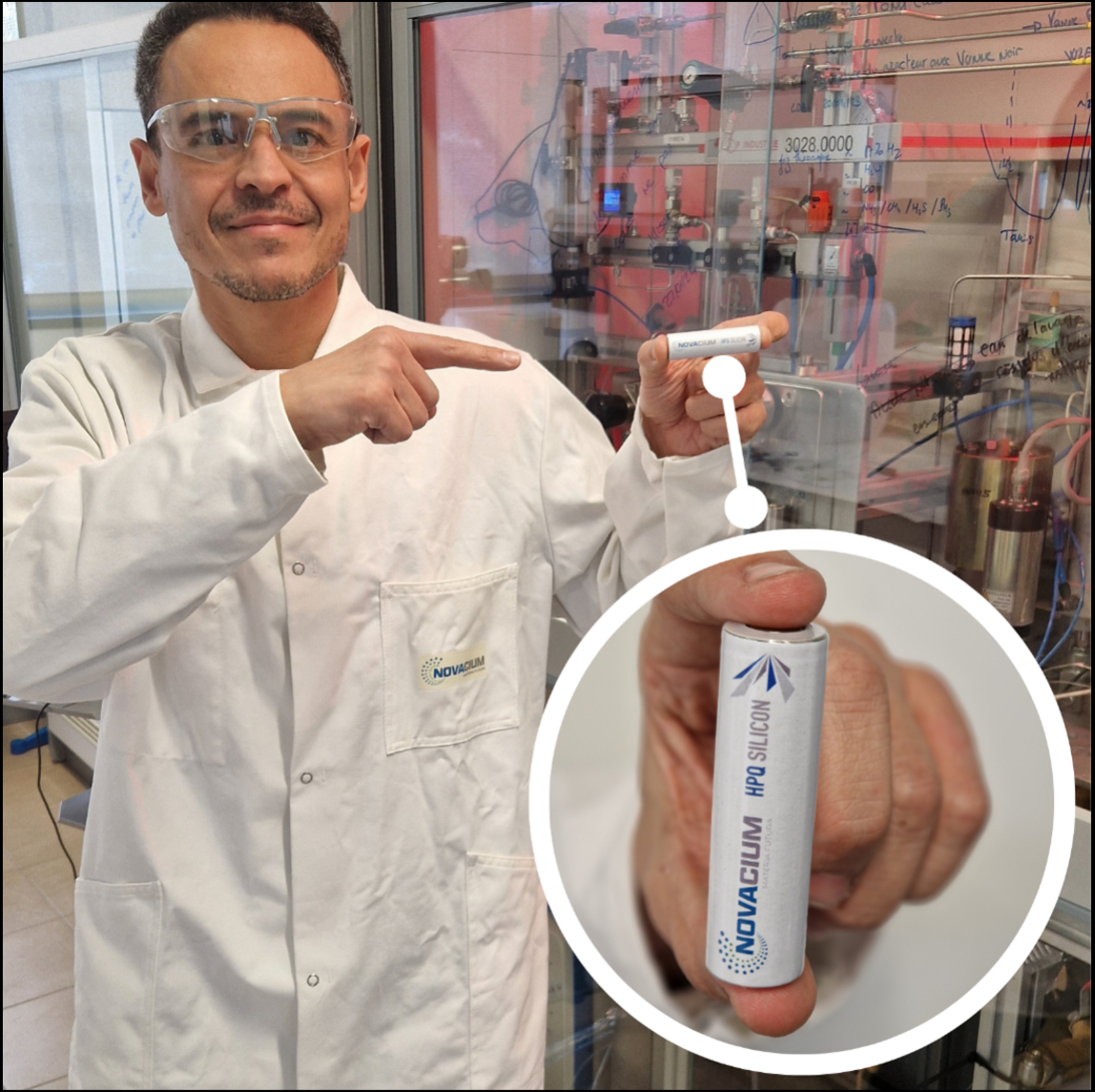Commercial Li-Ion Batteries Made with Novacium's First Gen Engineered SiOx Material
posted on
Feb 15, 2024 07:30AM
Achieved final critical milestones, completing a successful silicon pour

• Preliminary testing demonstrates a capability to improve performance by more than 14% without noticeable first-cycle degradation

Dr. Jed Kraiem PhD, COO of Novacium, holding an HPQ and Novacium Gen 1 18650 industrial battery.
In the realm of renewable energy and sustainable technology, HPQ Silicon Inc. continues to push boundaries and unlock new possibilities. Today, we delve into a groundbreaking development that could reshape the future of lithium-ion batteries. HPQ Silicon's France-based affiliate, NOVACIUM SAS, has achieved a significant milestone in battery technology, setting the stage for transformative advancements in energy storage. This milestone underscores HPQ Silicon's commitment to innovation and sustainability, positioning the company as a key player in the global drive towards net-zero emissions.
Background and Context:
HPQ Silicon, a leading technology company specializing in green engineering of silica and silicon-based materials, has been at the forefront of innovation in the renewable energy sector. With a focus on sustainability and efficiency, HPQ has established itself as a pioneer in developing cutting-edge solutions for energy storage and beyond. The latest achievement by its affiliate, NOVACIUM SAS, represents a culmination of years of research and development aimed at revolutionizing battery technology.
Key Highlights and Advantages:
The preliminary testing conducted by NOVACIUM SAS has yielded remarkable results, demonstrating a capability to improve battery performance by over 14% without noticeable first-cycle degradation. This achievement is a testament to the efficacy of HPQ's engineered SiOx material, which promises to enhance the efficiency and sustainability of lithium-ion batteries.
Potential Impact and Significance:
The implications of NOVACIUM's achievement extend far beyond the realm of battery technology. By enhancing the performance and sustainability of lithium-ion batteries, HPQ Silicon is poised to accelerate the transition towards renewable energy and electric mobility. This breakthrough could drive significant advancements in energy storage systems, consumer electronics, and electric vehicles, paving the way for a greener and more sustainable future.
Expert Opinions and Analysis:
Dr. Jed Kraiem Ph.D., COO of NOVACIUM SAS, expressed optimism about the preliminary results, highlighting their significance in validating the industrial potential of HPQ's SiOx material. Mr. Bernard Tourillon, President and CEO of HPQ Silicon Inc. and NOVACIUM SAS, emphasized the strategic importance of this milestone, positioning HPQ as a leading provider of innovative battery materials.
Challenges and Considerations:
While the initial results are promising, further testing and optimization will be essential to maximize the long-term performance and scalability of HPQ's engineered SiOx material. Addressing challenges related to production scalability and cost-effectiveness will be critical in realizing the full commercial potential of this technology. However, with HPQ's track record of innovation and strategic partnerships, these challenges are poised to be overcome.
Conclusion:
In conclusion, HPQ Silicon's Novacium has achieved a significant milestone in battery technology, showcasing the transformative potential of its engineered SiOx material. As the world moves towards a cleaner and more sustainable energy future, HPQ's commitment to innovation and sustainability positions it as a driving force in the global transition towards net-zero emissions. With continued advancements and strategic partnerships, HPQ Silicon is poised to lead the charge towards a greener tomorrow.
View Original Release: https://hpqsilicon.com/wp-content/uploads/2024/02/HPQ_PR_-1_-SIOX_BAT_FEB_15_24_VCL8.pdf